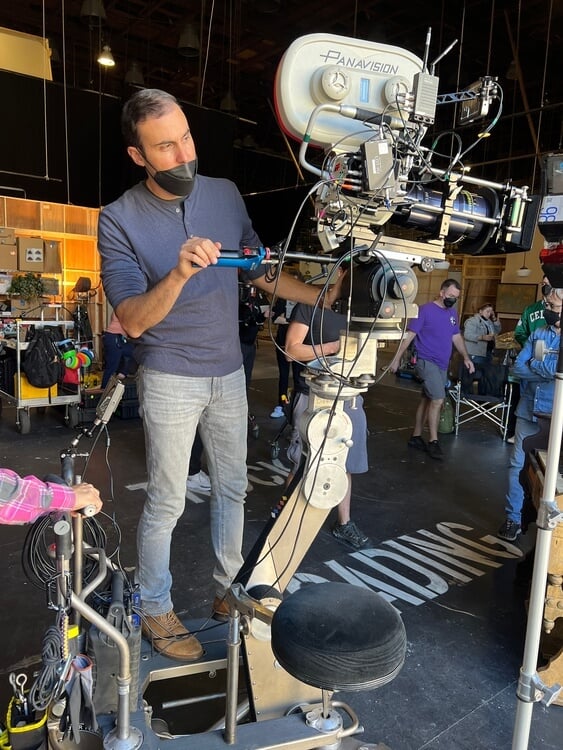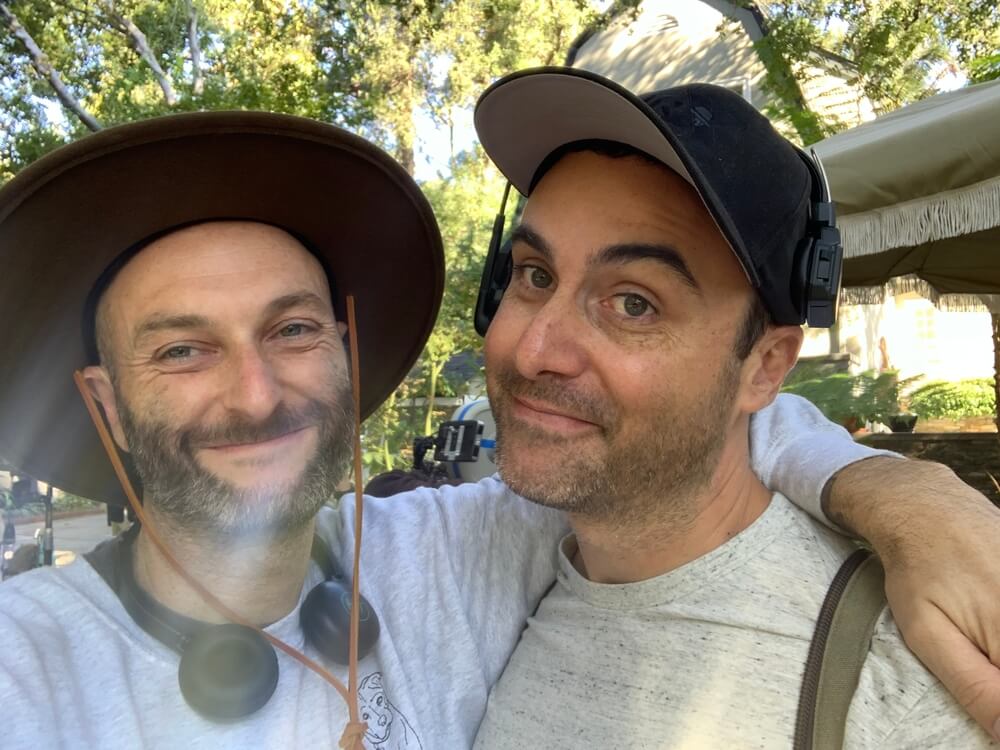Worthy Company
_frame_59955-1000x563-2b92c0e.jpg?sfvrsn=55389955_1)
Cinematographer Ricardo Diaz joined the HBO series Winning Time: The Rise of the Lakers Dynasty for Season 2’s third episode, “The Second Coming.” Depicting the backstory of basketball legend Larry Bird (played by Sean Patrick Small), the episode marked the directorial debut of Todd Banhazl, ASC, who had served as cinematographer on the series’ pilot episode and five subsequent episodes in Season 1 and was shooting four episodes across Season 2. “Rick is such a supportive, talented filmmaker and a dear friend — I knew I was taken care of,” Banhazl shares. “We had done the prep work together, and I trusted he had my back.”
For his work on the episode, Diaz has now been nominated for an ASC Award in the Episode of a One-Hour Series category. Panavision recently connected with Diaz for his insights on the episode and his collaboration with Banhazl.

Panavision: How was your experience joining the Winning Time team?
Ricardo Diaz: Joining Winning Time was a dream come true. It felt like every cinematographer was talking about the groundbreaking style that [executive producer and pilot director] Adam McKay, Todd Banhazl, [production designer] Rich Toyon, [costume designer] Emma Potter and countless others created in Season 1. So when Todd reached out to me about lensing his Season 2 episode, I jumped at the opportunity. The entire team warmly welcomed me from the start, so I immediately felt like I was a part of the family. Todd has a way of doing that — making you feel heard and as if you always belonged. He’s a great listener. It’s his superpower.
From that place of creative safety, I felt empowered to try things and experiment. In analyzing the script, we really saw Larry Bird’s portion play out like a spaghetti western. Todd and I talked about how we wanted his backstory to have a small-town Americana feel but still be as bold as the rest of the show. So we took visual inspiration from aspects of Smallville in Superman: The Movie to play into the ‘tall tale’ of Bird. We also creatively mined the ‘gunslinger-for-hire’ aspect of Larry’s recruitment by using Panavision’s anamorphic 16mm glass to give us the scope of a Western and the nostalgia of Americana while still firmly planting us in the framework of Winning Time.
_frame_19434-1000x563-2b92c0e.jpg?sfvrsn=5c5897ae_1)
How did you familiarize yourself with the show's unique style?
Diaz: Todd and I have been friends since meeting at AFI, so while he was conceptualizing the look of the show, I was frequently checking in to see if he would spill the beans on his testing. The results, as you know, were exciting, bold, and singular. When I started prep for my episode, I was given the show’s visual guides — both of them, one created by Todd that gave detailed emotional and technical direction, and one created by camera operator and 8mm 2nd-unit cinematographer Justin Cameron detailing how and when the 8mm and Ikegami cameras were utilized. Finally, I had the man himself directing the ship at all times.
Todd was generous with his time, answering any and all of my questions about the show’s visual language. He encouraged me to add my own voice to it when it came to conceptualizing Bird's backstory, which led us to the creation of a new LUT for our episode. The Winning Time color palette is steeped in an Ektachrome look reminiscent of commercial photography in the ’80s. So when designing Larry Bird's early days, we looked to the ’70s to find our color palette for the ‘everyman.’ That was Kodachrome. In combination with our 16mm anamorphic glass, we immersed Larry’s past in this Kodachrome LUT that just oozed Americana. This helped ground the image while still giving it that outsized Western scope.
_frame_45366-1000x563-2b92c0e.jpg?sfvrsn=eb9a9505_1)
What was it like working with a director who’s also a cinematographer?
Diaz: I’ve had the good fortune of collaborating with several directors whose roots were in cinematography. It’s a total joy. The language and shorthand is there along with a zeal for visual storytelling. Todd’s and my love of the craft and decade-long friendship is what drove our process. Most of our prep was spent speaking about how the pathos on the page could be translated into visual language. Then we went to the archives! We looked at work that inspired us and tried to understand how and why those scenes, shots and films were so effective. Often it came down to purpose.
Todd and I would also sometimes play out scenes in his dining room to get a feel for the characters. From their perspectives, we would try to imagine where the camera was in the room and why. They were wonderful meetings that reminded us why we do this: for the joy, immersion and magic of filmmaking.

Ricardo Diaz (right) with Todd Banhazl, ASC.
Explore all of our Winning Time coverage:
Championship Caliber
In Conversation: Winning Time
Winning Depth
All images courtesy of HBO.

